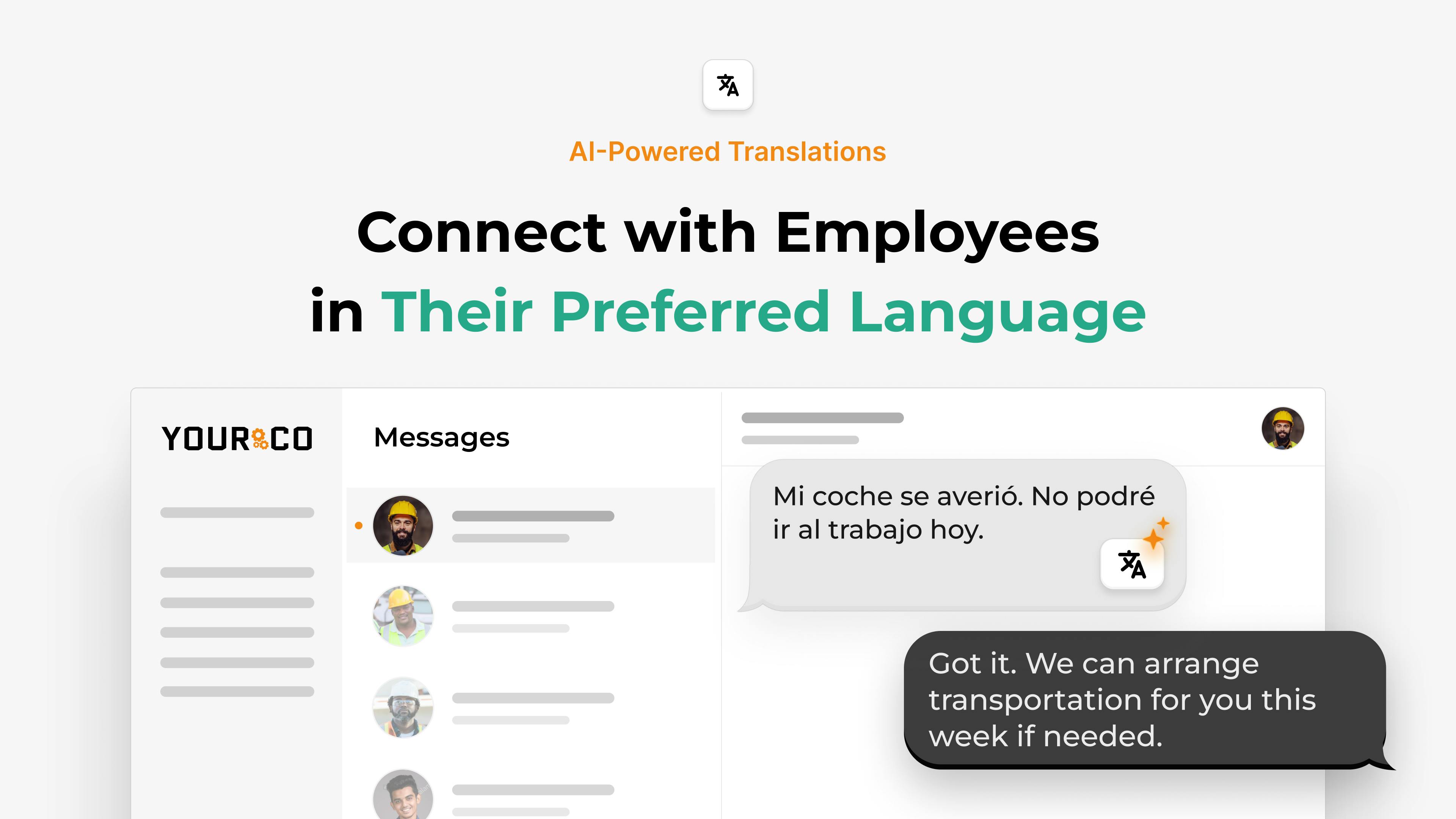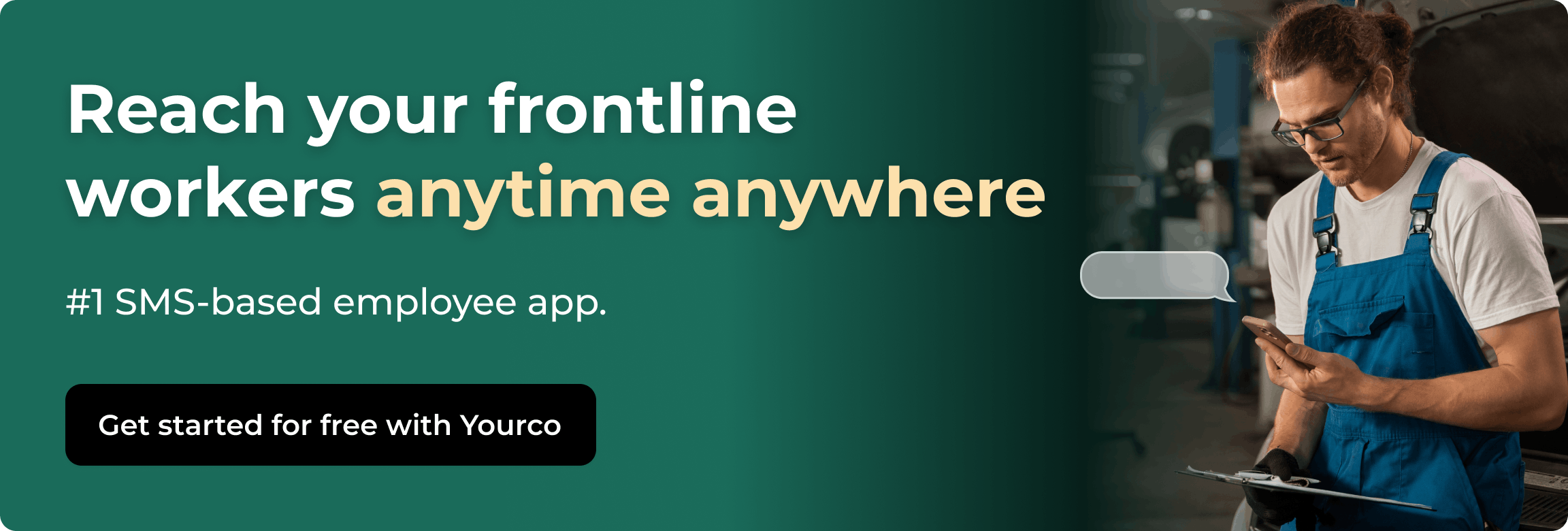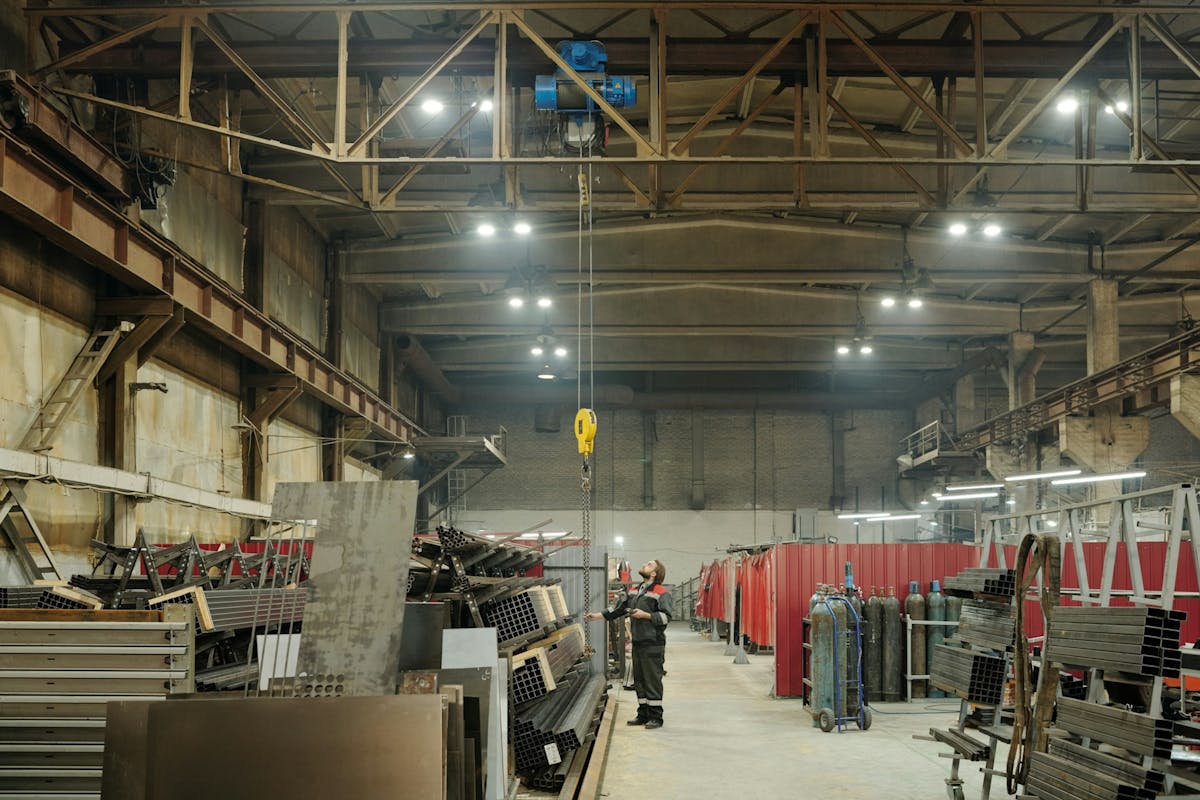What Employee Activities Will Appeal to a Diverse, Multi-Generational Workforce?


Today's workforce spans generations with distinct experiences and expectations. Traditionalists (born before 1946) often value structure and respect. Baby Boomers (1946–1964) tend to prefer direct, face-to-face feedback. Gen X (1965–1980) emphasizes independence and work-life balance. Millennials (1981–1996) seek collaboration and purpose, while Gen Z (1997 and later) prioritizes inclusivity, instant communication, and continuous learning.
Designing employee activities that appeal to a diverse, multi-generational workforce means balancing these differences with shared needs for recognition, meaningful work, and trust. When activities reflect both generational perspectives and common values, organizations see stronger collaboration, higher productivity, and a workplace where every employee feels engaged.
1. Build Mentorship Programs That Connect Generations
When you pair people from different age groups, you get valuable knowledge sharing that benefits everyone. Traditional mentoring pairs an experienced employee with someone newer, helping them navigate career choices, company culture, and workplace relationships. Reverse mentoring, where junior employees teach senior staff about new technology, social trends, or different approaches to work, can help break down age-based assumptions and create mutual respect.
You can choose from several mentoring formats depending on your company size and goals:
- One-on-one pairings offer focused, confidential relationships
- Group mentoring allows one or two mentors to guide several people at once, building a small learning community
- Peer mentoring connects colleagues at similar levels for mutual support
- Mosaic mentoring combines multiple formats, so each employee builds a network of advisors for different skills
Successful programs need structure, not just good intentions. Start by defining your purpose, such as leadership development, digital skills training, or knowledge transfer before retirements. Match participants based on interests and learning goals rather than just job titles.
Brief orientation sessions covering active listening, giving feedback, and maintaining confidentiality help both mentors and mentees feel prepared. Track simple metrics like meeting frequency, goal completion, and participant feedback at 90 days to show impact and demonstrate your commitment.
2. Create Cross-Generational Teams That Actually Connect
Building on the foundation of structured mentoring relationships, cross-generational social activities create natural opportunities for age groups to connect beyond formal programs. Breaking down age barriers gets easier when people work together on something that matters.
Use Storytelling to Build Respect Between Age Groups
Try a storytelling series where employees share five-minute snapshots of their career journeys. A Gen Z analyst might explain how TikTok taught them data visualization, while a Baby Boomer engineer describes troubleshooting before smartphones existed. These side-by-side stories build respect and curiosity across age groups.
For bigger teams, mix ages on volunteer days or problem-solving challenges. Teams that combine experienced workers' deep knowledge with younger colleagues' fresh perspectives consistently report higher creativity. This approach works because each generation brings different strengths. Keep challenges relevant by focusing on real work problems or community projects that everyone can see making a difference.
Make Events Work for Every Communication Style
Make each event work for everyone by offering both in-person and remote options, sharing agendas ahead of time, and using different communication methods.
Small, regular touchpoints often work better than big events. Brown-bag lunches on "one tool I can't live without," rotating coffee chats between departments, or walking meetings without phones create natural knowledge sharing. Companies that build these quick connections into weekly routines see stronger engagement across all age groups, according to various industry experts.
When you run these activities, set ground rules that welcome every voice. Use round-robin discussions, time limits for contributions, and anonymous idea boards to keep things fair. This way, each activity builds understanding instead of reinforcing stereotypes.
3. Design Learning Programs That Work for Every Generation
While social activities create connections, structured learning programs ensure those connections translate into professional growth for every generation. Designing training that works for all age groups starts with balance. You need digital ease for Gen Z, practical depth for Boomers, and just-in-time support for everyone in between.
Create Blended Learning That Meets Every Preference
A blended program that mixes short online modules with hands-on workshops gives each group a familiar entry point while helping them develop new skills. The simple rule: deliver core concepts in multiple formats, then let employees choose the path that fits their schedule and comfort level.
Personalization keeps those paths relevant. Brief skills assessments identify gaps. A learning system then guides each person toward the right next step, whether that's an advanced data course for a Gen X analyst or a fundamentals refresher for a returning retiree. This targeted approach speeds progress and supports transparent career development goals that work across age groups.
Build Knowledge Sharing Into Regular Training
Knowledge sharing fills in the gaps technology can't address. Host "tech cafés" where younger colleagues explain new tools in plain language, then let seasoned pros share industry changes they've seen firsthand. When these sessions run alongside formal coursework, you preserve institutional memory while keeping pace with change.
Keep lessons brief. Videos, five-minute quizzes, and mobile flash cards work with busy schedules and different attention spans.
Measure what matters. Track behavior changes, project outcomes, and peer feedback alongside course completions to prove impact. Strong learning analytics show which content works and which needs improvement, letting you refine the program before enthusiasm fades.
4. Offer Flexible Work Arrangements That Honor Different Life Stages
Just as learning programs must adapt to different preferences, work arrangements need flexibility to keep every generation engaged. You can't retain diverse age groups with a one-size-fits-all schedule.
Baby Boomers often equate long hours with commitment, while Millennials and Gen Z expect options that protect their mental health and personal time. Giving people choice, not mandates, drives retention across age groups.
Start with a menu of flexible arrangements that makes sense for your team:
- Hybrid days and compressed workweeks help Gen X parents manage school runs without sacrificing productivity
- Part-time roles let Millennials ease back from parental leave
- Phased retirement keeps experienced workers contributing a few days a week, so you don't lose years of hard-won expertise
Even small changes, like letting someone swap a late shift for an early one, show respect for different life stages.
Well-being programs work the same way. Physical health perks like on-site screenings appeal to older workers, but pair them with mental health resources and stress-management support that younger employees openly value.
Financial wellness matters too: pension planning helps Boomers, while debt management workshops address Gen Z's student loan concerns. When employees see options that fit their reality, they use them.
Success comes down to clear execution. Publish straightforward guidelines so everyone understands how to request flexible arrangements. Track usage and survey engagement quarterly to catch what's not working. Most importantly, apply policies consistently. Nothing kills trust faster than the perception that flexibility is reserved for a chosen few.
5. Recognize Achievements in Ways That Resonate Across Generations
While flexible work arrangements show respect for different life stages, recognition programs must acknowledge that appreciation itself looks different across generations. Every age group wants to feel valued, but they prefer different approaches:
- Traditionalists value quiet respect for their experience through handwritten notes or invitations to mentor younger colleagues
- Baby Boomers respond well to visible achievements — plaques, service anniversaries, or promotions that demonstrate their status and commitment
- Generation X values independence, so private acknowledgment combined with flexible scheduling often feels more genuine than public ceremonies
- Millennials want ongoing feedback through digital recognition in company newsletters or points they can use for learning opportunities
- Gen Z connects recognition to purpose — linking their achievements to charitable donations or sustainability projects shows real impact
The most effective approach combines monetary rewards with other incentives. Spot bonuses, wage increases, and gift cards work alongside public praise, extra time off, and growth opportunities.
Ask employees about their top three preferred rewards during onboarding to personalize your approach. Peer recognition platforms help colleagues across age groups celebrate each other in real time, breaking down barriers and building appreciation throughout your team. Recognize project completions, cross-training achievements, and new certifications to make sure every generation feels valued.
6. Build Employee Resource Groups That Bridge Age Gaps
Recognition programs work well for individual achievements, but Employee Resource Groups (ERGs) create ongoing communities where people from different generations can support each other systematically. Well-designed ERGs bring every age group together and naturally break down barriers in your workplace.
Structure ERGs for Cross-Generational Success
ERGs are voluntary, employee-led groups centered on shared identities or interests. When they welcome members of all ages, they become natural spaces for knowledge transfer, mentorship, and mutual respect.
To keep the focus on inclusion rather than labels, invite people from various age groups to co-chair each group. Rotating leadership prevents any single generation from dominating the conversation and shows that everyone's experience has value.
Consider creating a generational ERG focused on life-stage topics, such as career transitions, caregiving, or phased retirement, rather than age stereotypes. Pair meetings with reverse-mentoring sessions where younger employees share tech skills while seasoned teammates offer career guidance. This creates the two-way learning that resonates across all age groups.
Create Interest-Based Networks That Attract All Ages
Interest-based networks often attract the widest mix of ages. Sustainability committees tap into Millennials' purpose-driven mindset, Boomers' collaborative approach, and Gen Z's passion for social impact. Community outreach teams, innovation labs, or hobby clubs create similar overlap and help employees connect outside their usual work circles.
Ask each ERG to serve as an internal advisory board. Have them review new policies for generational fairness, test communication drafts, and suggest engagement ideas.
Track three straightforward metrics:
- Participation rates
- Number of cross-generational events launched
- Employee survey scores on belonging
That way, you can see whether your networks are strengthening culture and keeping every age group engaged.
7. Try Innovative Activities That Spark Immediate Connections
Beyond formal ERGs, innovative activities can spark immediate connections between age groups through shared problem-solving and friendly competition. Shared challenges bring people from various generations together better than traditional team-building exercises. When Boomers, Gen X, Millennials, and Gen Z work together to solve real problems, they stop focusing on differences and start appreciating what each person brings to the table.
Many HR teams now run cross-generational problem-solving sessions where mixed-age teams tackle actual workplace challenges, like redesigning a workflow or improving shift changes.
You don't need expensive technology to create these experiences. Try these accessible activities:
- Company trivia nights that blend industry history with current trends
- Board game sessions that encourage strategic thinking across age groups
- Safety drill competitions that combine experience with fresh perspectives
- Problem-solving workshops focused on real workplace challenges
- Innovation challenges where teams develop solutions to operational issues
The key is making activities accessible with clear rules, reasonable time limits, and different ways for people to contribute. This way, Gen Z tech users, Gen X project managers, and Boomer industry experts all find ways to help their team succeed.
For teams comfortable with digital tools, brief learning challenges or virtual reality training work well. These activities appeal to busy Gen X managers and multitasking Gen Z employees alike.
The results extend beyond the activity itself. When people from various generations collaborate and succeed together, they build mutual respect that improves daily communication and project work across the organization.
How Yourco Helps You Engage Every Generation
All these engagement strategies require consistent, clear communication that reaches every employee regardless of their preferred technology or communication style. Yourco keeps every age group in the loop by using the one channel everyone already knows — SMS. Because text messaging works on any mobile phone, Traditionalists who avoid apps and Gen Z employees glued to their screens all receive the same information at the same speed.
A quick message can nudge a mentor-mentee pair before their next check-in, confirm tomorrow's volunteer shift, or deliver a 60-second microlearning tip. You schedule once, and Yourco handles the timing, so no one misses out. Need to reach multilingual teams? Built-in translation supports 135+ languages and dialects, removing the friction that often sidelines non-native speakers.
Two-way surveys arrive as simple yes/no questions or short polls. Whether you want feedback on a new wellness program or ideas for the holiday schedule, every worker, from the factory floor to the head office, can reply in seconds. Results appear on your dashboard in real time, letting you adjust activities while energy is still high.
Recognition travels just as fast. Send an instant shout-out when a cross-generational team wraps a big project, or remind everyone of a veteran employee's work anniversary. SMS makes these moments public enough to celebrate, yet personal enough to feel genuine.
Ready to bring all five generations closer together? Try Yourco for free today or schedule a demo and see the difference the right workplace communication solution can make in your company.
Frequently Asked Questions
How do you get different generations to participate in the same activities?
Start with activities that focus on shared goals rather than age differences. Work-related challenges, community service projects, and skills exchanges naturally attract people from all generations because they offer mutual benefit. Offer multiple participation options — in-person, virtual, or hybrid — and communicate through different channels like email, text, and bulletin boards to reach everyone's preferred method.
What's the biggest mistake companies make with multigenerational engagement?
The biggest mistake is designing activities based on stereotypes rather than individual interests and work needs. Assuming all Boomers hate technology or all Gen Z workers need constant feedback creates programs that miss the mark. Instead, survey your actual employees about their preferences and focus on activities that solve real workplace challenges everyone cares about.
Which activities work best for remote or hybrid teams?
Virtual mentoring sessions, online skills exchanges, and collaborative problem-solving challenges work well for distributed teams. Digital storytelling projects, cross-generational book clubs, and shared learning platforms help build connections when face-to-face interaction isn't possible. The key is ensuring every activity has clear structure and multiple ways for people to contribute.
How do you measure the success of multigenerational engagement efforts?
Track both quantitative metrics (participation rates, employee satisfaction scores, retention rates by age group) and qualitative feedback through surveys and focus groups. Look for improvements in cross-departmental collaboration, mentoring program completion rates, and reduced age-related complaints. Most importantly, measure whether employees from different generations are working together more effectively on daily tasks.




